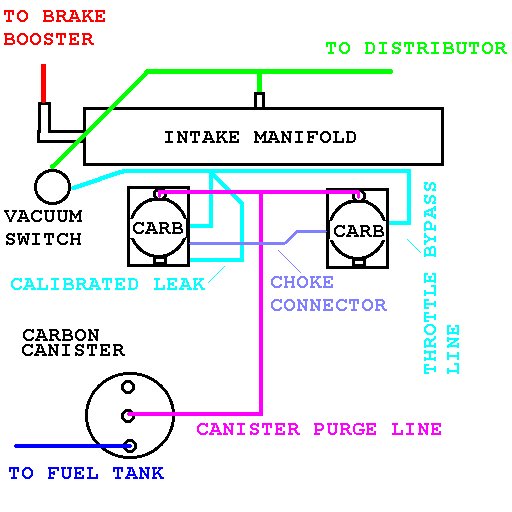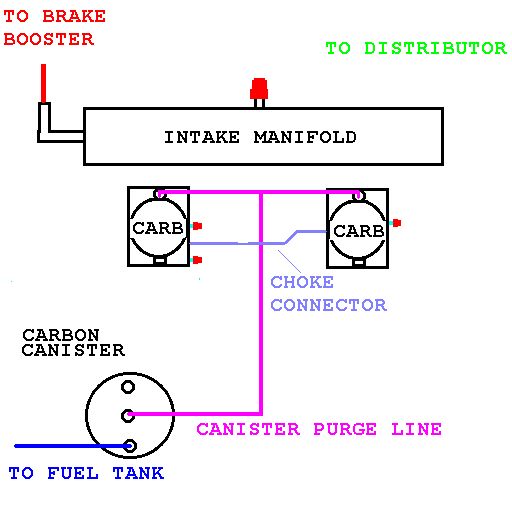| Moderated by: Greg Fletcher | ||
| Author | Post | |||||||||
|---|---|---|---|---|---|---|---|---|---|---|
|
Mondial1 Member
|
On my 73 MK1 ,the vacuum line running from both the ZS carbs to the vacuum control valve, then it is shown going to the intake manifold. my question is, is there suppose to be a "t" line for a line running then to the Distributor? Mine seems to have a line going to just the manifold and not to the distributor. are these not vacuum advance distributors or being the distributor was converted to pointless ignition make some kind of difference? thanks |
|||||||||
|
answerman Member
|
Well, the good news is that you probably don't need it anyway as I'd guess it doesn't work. The other important thing to note is that on the Stromberg equipped cars, it's not a vacuum advance: it's actually a vacuum retard to prevent overrun on deceleration. So it doesn't actually do anything for you performancewise: it's purely an emissions thing. Here are my diagrams (modified from Mark Rosenbaum's originals from years back) showing the "stock" setup and what I now have. Before:  And after:  Capped off ports are shown with a red cap in the diagram. I also removed the vacuum switch as it really didn't accomplish anything any more. Last edited on 03-10-2018 04:21 am by answerman |
|||||||||
|
Mondial1 Member
|
Thanks for the information and diagrams!!!, I wondered why the car didn't run any different with the vacuum hoses capped off as opposed to being hooked up. I also had no idea the distributor was not vacuumed advanced. All great info. many thanks! Mark |
|||||||||
|
Esprit2 Member
|
The distributor's vacuum capsule provides 8 degrees of retard in order to minimize oxides of nitrogen during closed throttle over-run and idle. Idle rpm rises with more idle advance, and falls with less. With 8 degrees of vac retard, the throttle idle speed screw has to be screwed in so far (the throttles opened so much) to keep the idle rpm up to where the engine can idle smoothly that the engine tends to run-on (Diesel) when switched off. . Later Lotus applications used a throttle jack solenoid that kicked the butterflies open a little bit whenever the ignition was on. The idle speed was set with the ignition on (duh) and the solenoid energized. Then when the ignition was switched off, the throttles slammed shut the rest of the way (basically 'closed'), and the engine quit cleanly without running-on. Even later Lotus engines used an 'Anti Run-On' valve (ARO Valve) to prevent Dieseling. The point is that, without such features, vacuum retard can lead to cronic 'running-on' when the ignition is switched off. The simple solution is to disconnect the vacuum line to the distributor's vacuum capsule, killing the vacuum retard. Running with normal idle advance (no vac retard) will cause the idle rpm to rise, so adjust it back down via the idle speed screw. In the end, a normal idle rpm is achieved with a more closed throttle, and the engine just stops cleanly when the ignition is switched off. If the car has to pass an annual emissions test, then the vac retard can be hooked-up again for a day. If not, just disconnect it and cap-off the vacuum spigots (fittings). The engine doesn't need or want vac retard, will run better without it, and will never miss it. If you would like to go a step further, increase the idle advance to 12 BTDC, then adjust the idle rpm back down. Regards, Tim Engel |
|||||||||